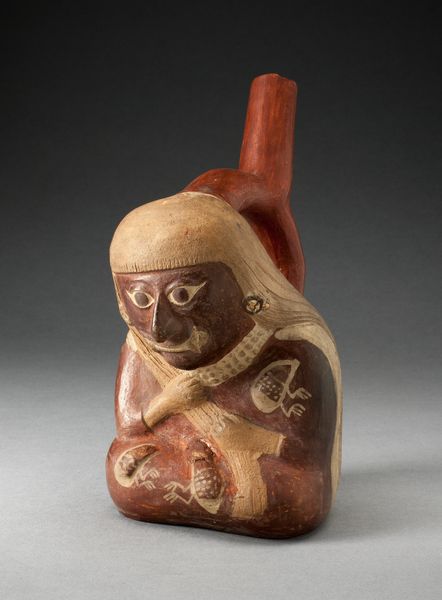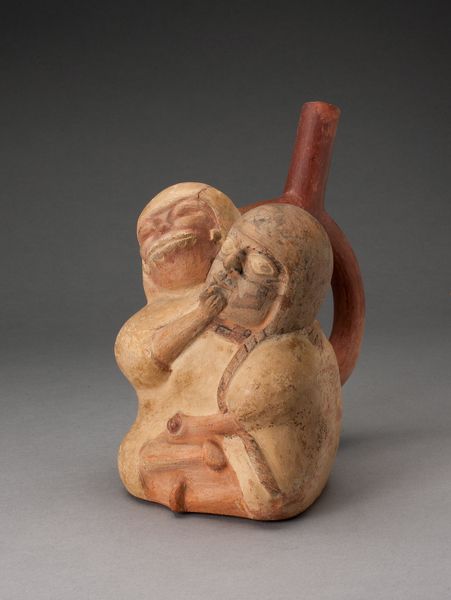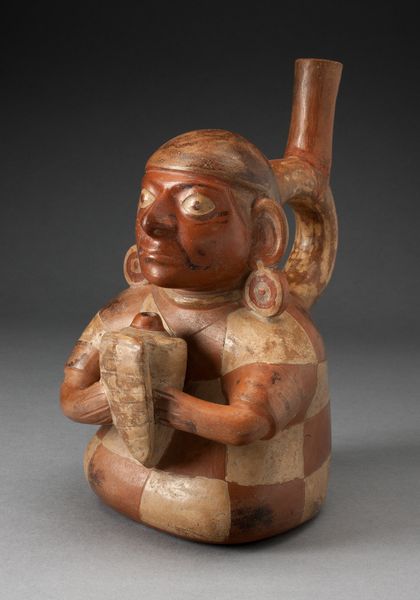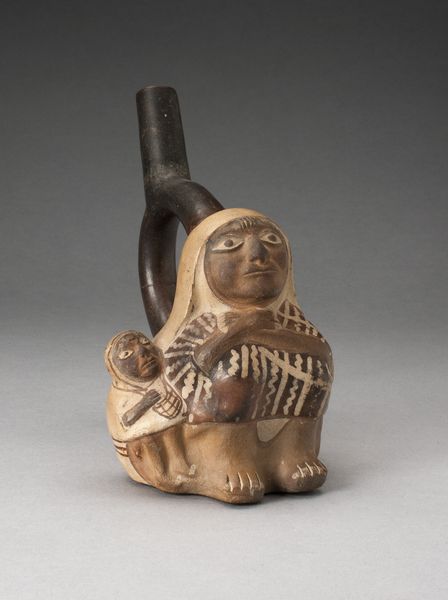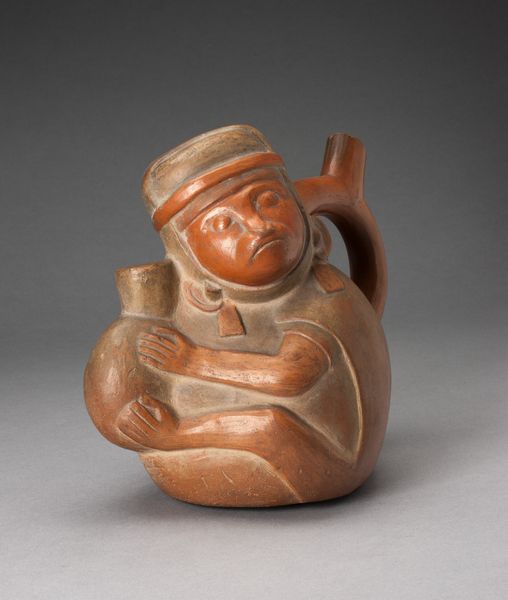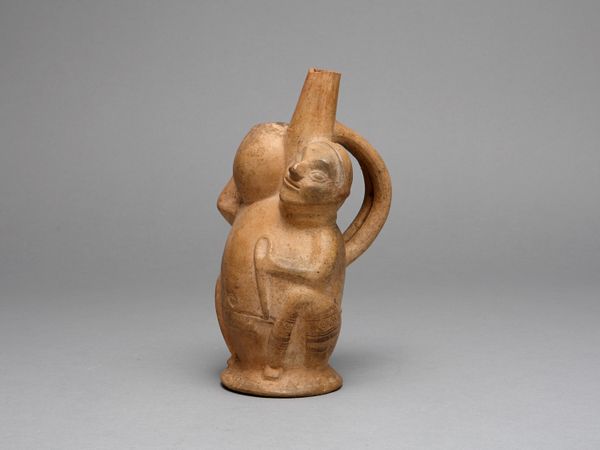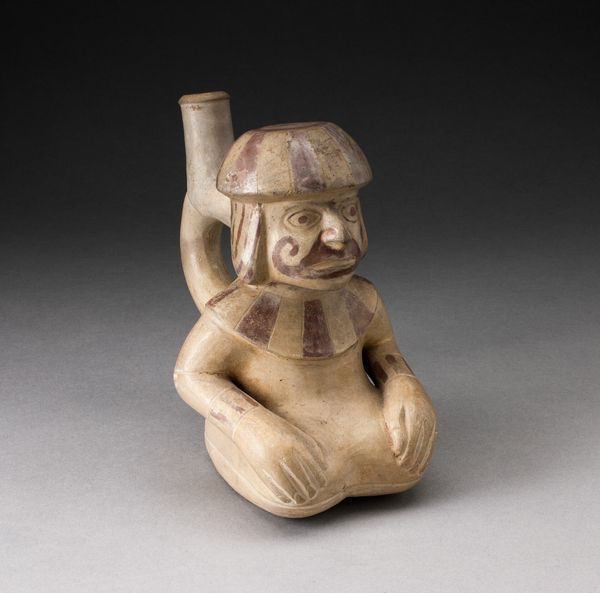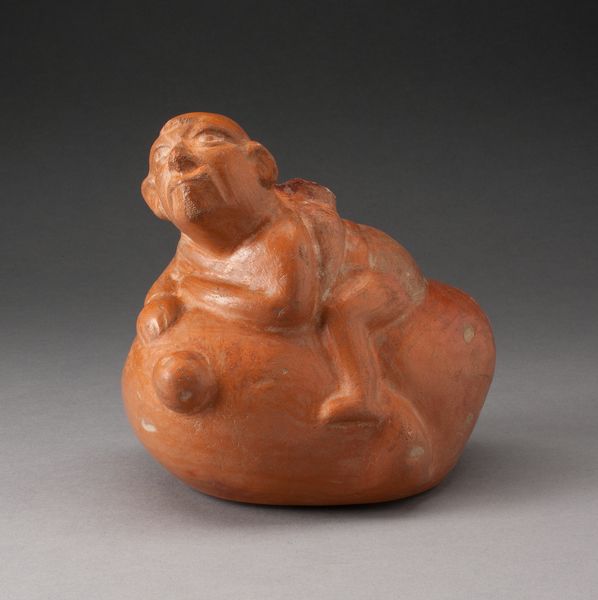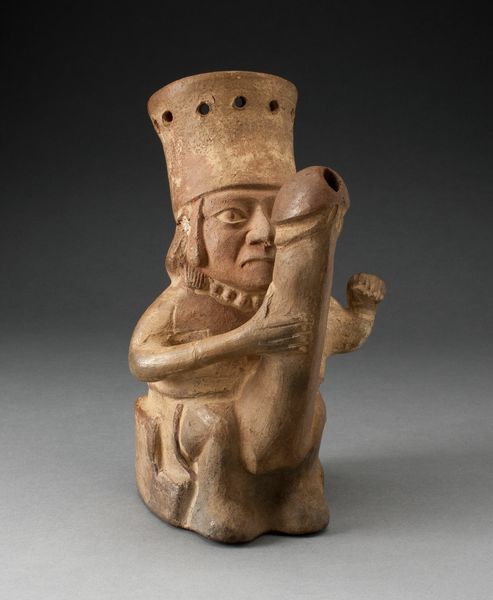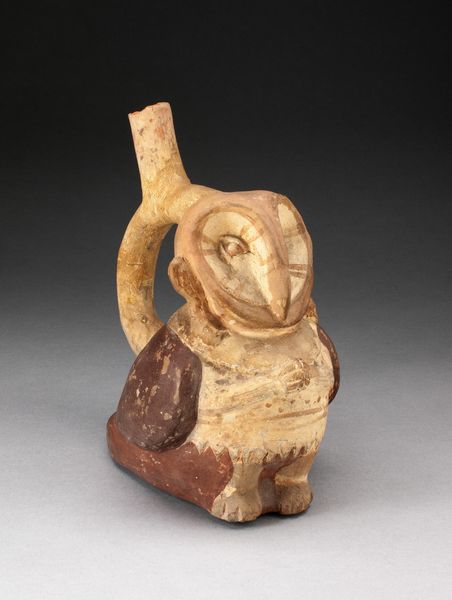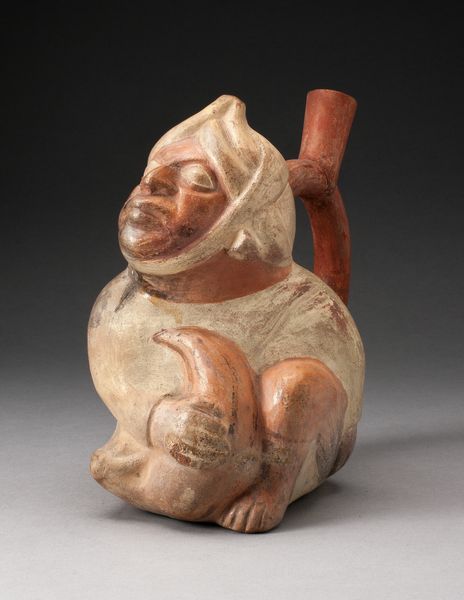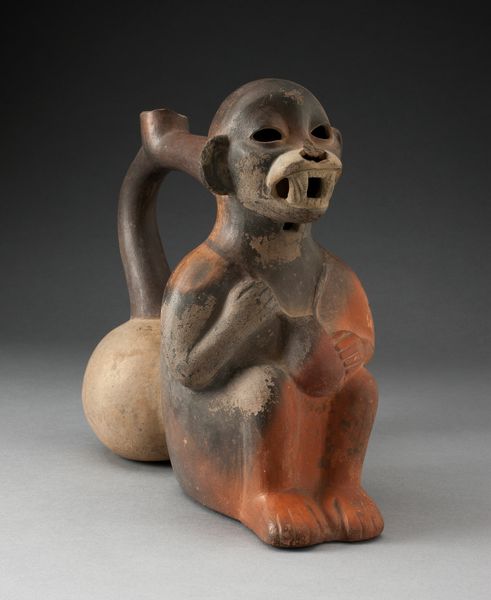
Handle Spout Vessel in the Form of a Seated Pregnant Woman c. 100 - 500
0:00
0:00
ceramic, sculpture, terracotta
#
ceramic
#
figuration
#
sculpture
#
terracotta
#
indigenous-americas
Dimensions: 20.5 × 14.6 cm (8 1/16 × 5 3/4 in.)
Copyright: Public Domain
Curator: Before us stands a ceramic creation hailing from the Moche culture, circa 100 to 500 CE. The title is “Handle Spout Vessel in the Form of a Seated Pregnant Woman," currently held here at the Art Institute of Chicago. Editor: What strikes me immediately is its serenity. The rounded forms and the warm terracotta hue evoke a feeling of gentle calm. It’s intimate despite being rendered in such durable material. Curator: Moche pottery often served as a visual language, reflecting societal values and beliefs. How does this portrayal of pregnancy connect with the socio-political landscape of its time? Were fertility and motherhood key markers of status? Editor: Absolutely. Depictions of pregnancy are rarely just about the physical state; they're often entangled with ideas about power, continuity, and the sacred feminine. Think about it: in many cultures, a pregnant woman embodies the future of her community. Here, her prominent belly speaks volumes. It’s not simply reproductive; it's generative of culture, ancestry, and maybe even spiritual insight. Curator: The distinctive stirrup spout is particularly intriguing from a functional perspective. I imagine that these vessels held important liquids such as water, beer or chicha to be used in ceremonial events or for specific rituals and perhaps placed in tombs as a regenerative symbol of the continuity of life. It suggests a deep connection between daily life and spiritual beliefs. Editor: Yes, and notice how her seated position lends her stability and groundedness, rooting her firmly in place. It resonates powerfully, especially when you consider indigenous perspectives on women as earth mothers. This is no passive depiction of pregnancy; it is an affirmation of strength and enduring spirit. The vessel speaks not only to fertility but to the broader generative capacity of women in society. Curator: Thinking about contemporary receptions of art like this one—we should be wary of framing ancient cultural artifacts solely through a modern lens. How can we avoid essentializing indigenous representations of femininity? Editor: I agree. By being critical and engaging diverse viewpoints that amplify indigenous voices, we actively confront the inherent biases within our academic perspectives. Instead, consider her through her artistic and historical value within Moche social context. This isn’t merely about celebrating childbirth; it's a tribute to the indispensable social roles held by Moche women in that culture. Curator: That is certainly valuable to take into consideration. Overall, examining such sculptures allow us to question preconceived notions about gender roles. Editor: Indeed. Ultimately, this “Handle Spout Vessel in the Form of a Seated Pregnant Woman” offers a rich site for considering intersecting meanings around gender, life, and socio-cultural values.
Comments
No comments
Be the first to comment and join the conversation on the ultimate creative platform.
